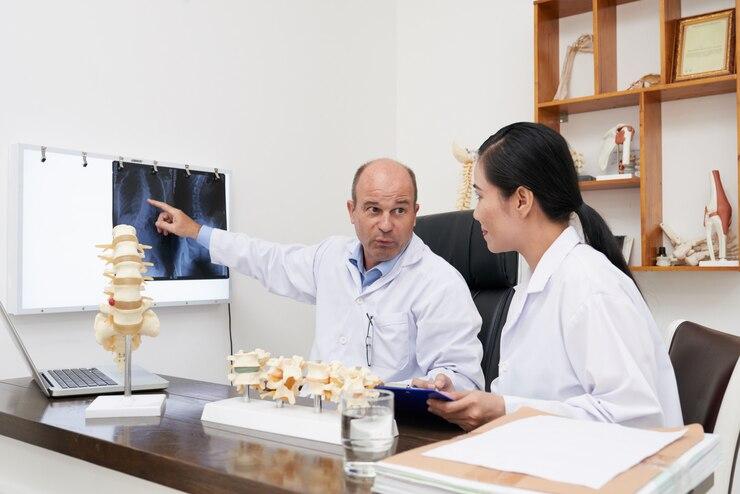Knee injuries and conditions are the various maximum, not unusual, musculoskeletal issues human beings face. Whether because of sports-associated accidents, wear and tear, or underlying medical situations, problems with the knee can be debilitating. Over time, advancements in medical generation and remedy strategies have revolutionized how we compare and deal with knee troubles. In this newsletter, we can discover the most commonplace knee accidents and conditions, the evolution of knee assessment and remedy, and the new advances in this area. Early prognosis and treatment are important in ensuring a full restoration and a pain-unfastened existence.
What are the maximum commonplace knee injuries and situations?
Before we delve into the present-day advances, it’s important to understand the not unusual knee injuries and situations that people face:
Anterior Cruciate Ligament (ACL) Injuries: Often going on in athletes, ACL accidents are painful and require an active remedy.
Meniscus Tears: The meniscus acts as a cushion in the knee. Tears in this shape can lead to pain and restrained mobility.
Knee Osteoarthritis: A degenerative circumstance, osteoarthritis ends in cartilage harm, inflammation, and pain.
Patellofemoral Pain Syndrome (Runner’s Knee): This situation results in pain across the kneecap, particularly in runners.
Tendonitis: Inflammation of the tendons can result in aches and confined movement.
How has knee assessment and treatment advanced over the years?
The history of knee evaluation and treatment is a tale of non-stop innovation. In the past, knee problems have been frequently controlled via rest, ice, compression, and elevation (RICE). Surgical interventions have been confined and come with widespread risks. However, as clinical technology has advanced, so can assessment and treatment of knee problems efficaciously.
What are the modern advances in knee evaluation and treatment?
The area of knee evaluation and remedy is always evolving. Let’s discover the state-of-the-art advances in each assessment and treatment of knee injuries and situations.
Latest Advances in Knee Evaluation
New Imaging Technologies
Advancements in medical imaging have played a pivotal role in knee assessment. Magnetic Resonance Imaging (MRI) and 3-D CT scans provide extraordinary insight into the knee’s internal systems, aiding in accurate analysis.
Computer-Assisted Navigation Systems
Computer-assisted navigation structures have made knee surgeries more unique. They provide actual-time comments to surgeons for the duration of strategies, enhancing the accuracy of joint replacement surgical procedures and other interventions.
Arthroscopy
Arthroscopy is a minimally invasive system that permits surgeons to visualize and treat knee problems with small incisions. This approach minimizes scarring, reduces recuperation time, and lowers the threat of headaches.
Biomarkers
Biomarkers are a modern-day device for assessing knee fitness. These molecules can imply the presence and severity of unique knee situations, enabling early diagnosis and remedy-making plans.
Latest Advances in Knee Treatment
Minimally Invasive Surgery
Minimally invasive surgical strategies have converted the landscape of knee remedy. These tactics involve smaller incisions, reduced scarring, and quicker recuperation times. They are usually used for ACL repairs and meniscus surgical procedures.
Robotic Surgery
Robotic-assisted surgery is gaining popularity in the area of knee treatment. Robots offer extraordinary precision in joint alternative surgical procedures, ensuring the appropriate health and alignment, which could lead to higher patient consequences.
Regenerative Medicine
Regenerative medicinal drug has opened new avenues for knee treatment. Therapies, including platelet-rich plasma (PRP) and stem cellular injections, harness the body’s natural restoration skills to repair broken tissues and reduce irritation.
Stem Cell Therapy
Stem cell remedy involves injecting stem cells into the knee to promote tissue regeneration. It shows promise in treating knee osteoarthritis and may postpone or prevent the want for joint alternative surgery.
Platelet-Rich Plasma (PRP) Injections
PRP injections use a focused shape of the affected person’s blood to stimulate restoration in the knee. They are beneficial for conditions like tendonitis and may accelerate repair.
Hyaluronic Acid Injections
Hyaluronic acid injections offer lubrication to the knee joint, decreasing pain and enhancing mobility. They are commonly used for knee osteoarthritis.
Case Studies of Patients Who Have Benefited from the Latest Advances in Knee Evaluation and Treatment
To illustrate the real-global impact of those advancements, let’s explore some case studies of sufferers who have benefited from the brand-new knee evaluation and remedy techniques:
Case Study 1: Minimally Invasive Surgery for Torn Meniscus
Sarah, a younger athlete, suffered a torn meniscus at the same time as playing soccer. Thanks to minimally invasive surgery, she underwent fast healing and turned again on the sphere in document time.
Case Study 2: Robotic Surgery for Knee Replacement
John, a retiree with excessive osteoarthritis, opted for a robotic surgical procedure for his knee substitute. The robot’s precision ensured perfect health, and he experienced a faster recovery than anticipated.
Case Study 3: Stem Cell Injections for Knee Osteoarthritis
Martha, an active senior, is suffering from knee osteoarthritis. Stem cell injections supplied her remedy and progressed her mobility, allowing her to revel in her preferred sports again.
Conclusion
The destiny of knee evaluation and remedy appears promising. With state-of-the-art advances in imaging technologies, surgical techniques, and regenerative treatment options, sufferers have more alternatives than ever to cope with knee accidents and conditions. Personalized medicinal drug is becoming a cornerstone of knee care, permitting treatments to be tailored to individual wishes and characteristics. Personalized restorative medicine considers the unique genetic, biological, and environmental elements that affect knee fitness. It ensures that treatment plans are tailor-made to the precise desires of each affected person, maximizing the probability of successful final results.


